Sassanid Empire Introduction
Before the rise of Islam and the Arab invasion of Persia, the last Sassanid empire of Persia from 224 to 651 AD ruled the land of Persia with glory for 427 years. One of the most important and influential periods in the history of Persia was the period of the Sassanid rule because they reunited Persia for the first time after the fall of the Achaemenids.
The kings of this great empire knew themselves from the Persian dynasty and the race of the Achaemenid kings. This powerful and unified empire was founded by Ardeshir Papkan, defeating the last Parthian king, Ardavan V, and brought the Persian Empire under one flag again for the first time in nearly 600 years after the fall of the Achaemenids.
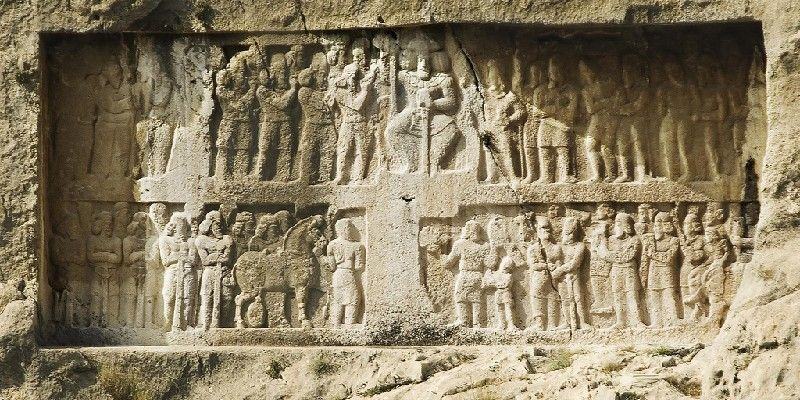
Sassanids Ruling Regions
During their lifetime, the Sassanid Empire ruled the entire Persian plateau, from east to west, west to the borders of present-day Syria, northeast to the Aral Sea, and northwest to present-day Georgia, alongside its constant and powerful rival. That is, Byzantium was considered the two superpowers of the world.
The main force opposing the Parthian government was in Persia. The province of Persia was still important as the origin of the old Achaemenid state, in addition to a number of the country’s elders who were considered ancient families, lived there, and had land, cavalry, or religious occupations.
Sassanid Empire Family History
One of the olden families of Persia was the Sassanid dynasty, which attributed its relationship to the Achaemenids. The city of Istakhr was located near Persepolis, and the temple was considered an important one. Sasan, like many other Persian elders, was dissatisfied with the Parthians, and in general, at the time of the establishment of the Parthian dynasty, the Persian state resisted and maintained its internal independence. It also became a political situation. Especially since from this marriage, a son was born who came to rule the kingdom of Persia.
This son was named Babak, and during his reign, the prestige and influence of the Sassanid dynasty increased. It caused concern to Ardavan, the last Parthian king, because he was aware of the Sassanid dynasty’s enmity with the Parthian government and knew how much Ardashir, Babak’s son, was working against the government. For this reason, he asked Babak not to appoint Ardeshir to the Persian government after him. During his father’s reign, Ardashir commanded the cavalry, the principal nucleus of the army, thus becoming more hostile and hostile to the Parthians, and tried to bring disgruntled elders and clerics with him to overthrow the Parthians.
Sassanid Empire Founder
Ardashir took control of the Persian government by resorting to military force, thus revealing his rebellion against the Parthian king Ardavan. Ardavan tried to crush him by his allied elders, but Ardeshir’s leadership brought him a great victory. As a result, Ardavan rushed to confront Ardeshir, but he was also defeated and killed on the battlefield. With the assassination of Ardavan, the Parthian government ended, so the Sassanid government was established.
Thus, Ardashir came from the kingdom of Persia to the land of Persia, and with the help of his allied elders, he broke the remnants of the Parthian allied families. Ardeshir’s military operation against the Parthians was accompanied by the participation. Ardashir, like his grandfather Sasan, was interested in reforming religious affairs, and the clerics accompanied him in this matter.

Sasanian Empire Beliefs
He believed that the cause of Zoroastrian religious division was the intensity of sectarian monarchies because each kingdom in each state had a fire temple whose religious affairs were independent of other fire temples. Therefore, the establishment of political centrality and the removal of local kings will pave the way for unity and concentration in religious affairs. Due to that, the position of the cleric in the Sassanid government became of particular importance. The cleric was the head of all clerics and the administration of fire temples. The capital of the Sassanids was the city of Ctesiphon, and the city of Ctesiphon was located in present-day Baghdad, the ruins of which still speak of the Sassanid prosperity.
He was at the head of the Sassanid administrations of Bozorgfarmazar or Sadr Azam and in fact, he was in charge of power and administration of the country. He signed contracts and agreements. Sometimes in wars, he took command of the general. All courts or ministries were under his supervision with their secretaries. Ardeshir Babakan, as a king of the clergy, after sitting on the throne, made the Zoroastrian religion the official religion of Persia and forbade belief in other religions.
Zoroastrian Scholars During Sassanid Empire
Among the Zoroastrian scholars who served the Sassanid kings in strengthening and expanding that religion, we should first mention Tensor, the priest of the time of Ardeshir Babakan and other Azarbad Mehraspandan, the priest of the time of Shapur I and Cartier, the priest of the time of Hormozd and Bahram I.
All pre-Islamic Persian religions were based on the two principles of good and evil, or Jupiter and the devil. The difference between them is in the quality and duration of the fusion of evil with goodness. In Zoroastrianism, good will eventually overcome evil. Other religions, such as Judaism, Christianity, and Buddhism, were prevalent in some parts of Persia. Judaism was more widespread in Babylon, Hamedan, and Isfahan, Christianity in Armenia and Khuzestan, and Mesopotamia, and Buddhism in Transoxiana, Khorasan, and Balkh.
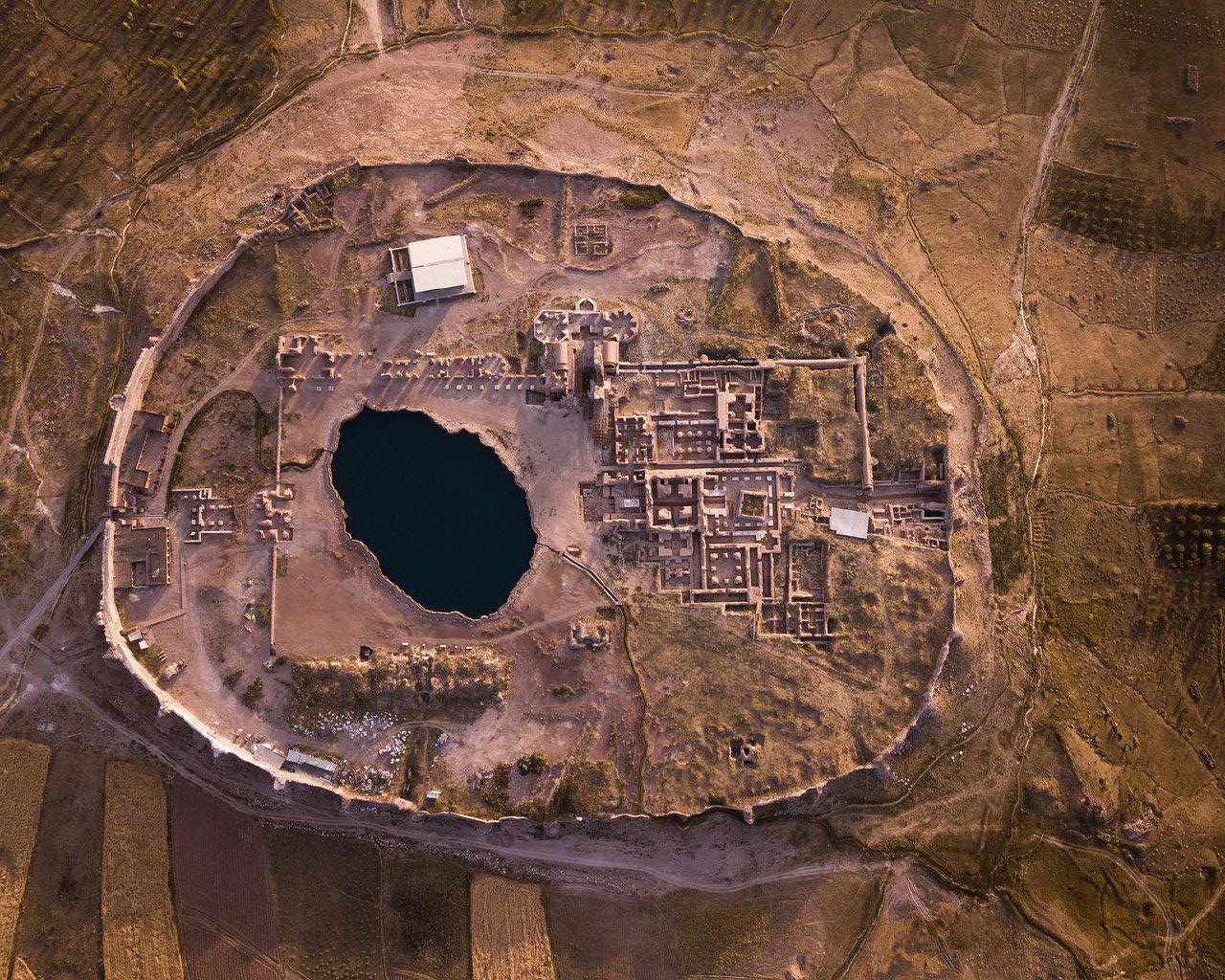
Persian Civilisation During Sasanian Empire
During the Sassanids, Persian civilization was at its peak. This civilization even spread to Europe, China, and Africa and had an impact on the Roman Civilization. What is today called the golden age of Islam (in terms of music, architecture, etc.) Sassanid civilization was transferred to the Islamic world.
The language of the Persians during the Sassanid period was the Sassanid Pahlavi. The Persian script in this period was derived from the Aramaic script and was divided into two types: Pahlavi script, inscription or patrol, and Pahlavi script, book, or general script. Among the types of art of the Sassanid period, we can mention architecture, sculpture, and painting, many of which are discovered by archaeologists every year.
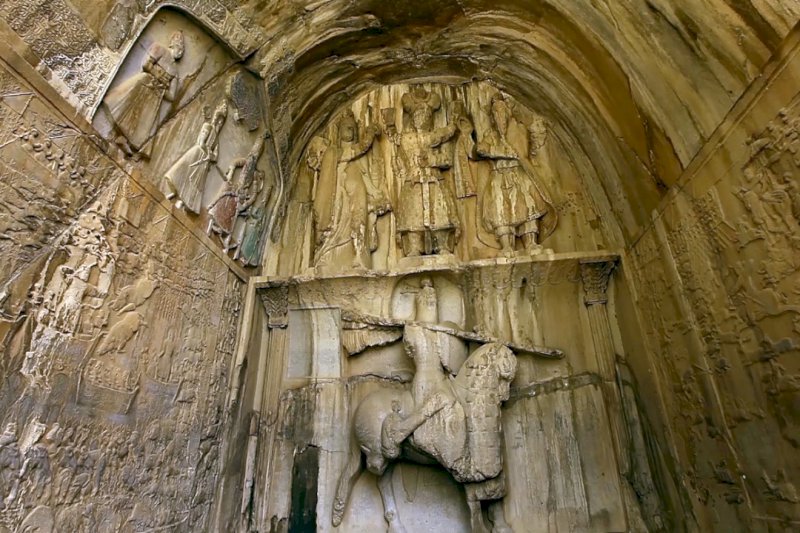
Sassanid Empire Architecture
In the Sassanid period, the art of architecture was more impressive than sculpture and painting. The early works of Sassanid architecture are very similar to the architecture of the Parthian period. During the Sassanid period, several cities were built, all of which had fortifications and other defense facilities. Like Bishapour and Firoozabad in Fars province, Gandishapour, Ctesiphon, and the like. In these cities, there were fire temples, palaces, and castles, the remains of which are still standing.
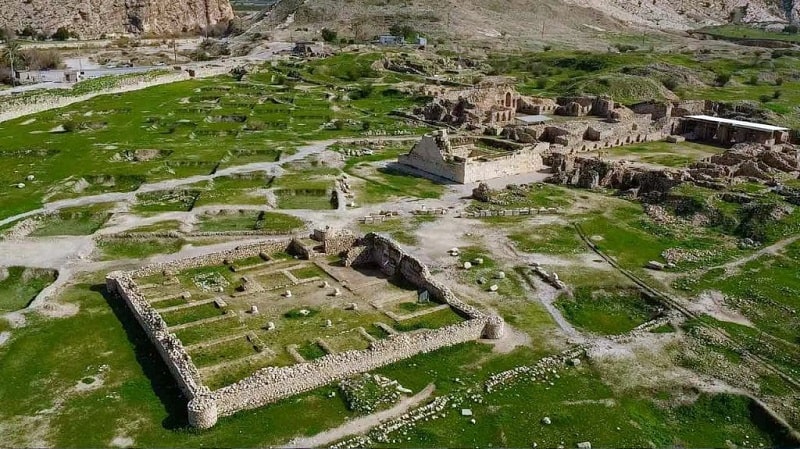
Sasanian Arch in Persian Architecture
Madain Palace, which is the remains of the famous court of Khosrow I and II in Ctesiphon. The arch is now located on the banks of the Tigris near Baghdad in a place called Salman Pak, including Qala-e Dokhtar near Firuzabad, the Fire Temple, and Ardeshir Palace in Firuzabad. Gandishapour was one of the important buildings of the Sassanid period, which was the scientific and educational center and, in the words of the first university in the world. One of the relics of the Sassanid period is Kasra Arch. The other is the Sweet Palace, which Khosrow II built for his beloved wife (Shirin), and its remains remain in a city called Qasr Shirin.
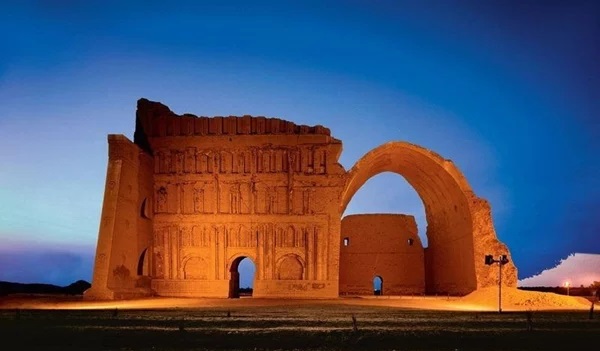
Sasanians Heritage
One of the most interesting historical monuments is a cave dug in a rock in the Bostan arch, which shows the hunting ground of Khosrow II. These works remain inside the city of Kermanshah. One of them shows Shapur I, with Valerian kneeling in front of him and Cyriadis, the new Roman emperor, standing in front of Shapur in reverence. A large statue of Shapur I was found in Shapur Cave, which is now standing in the cave.
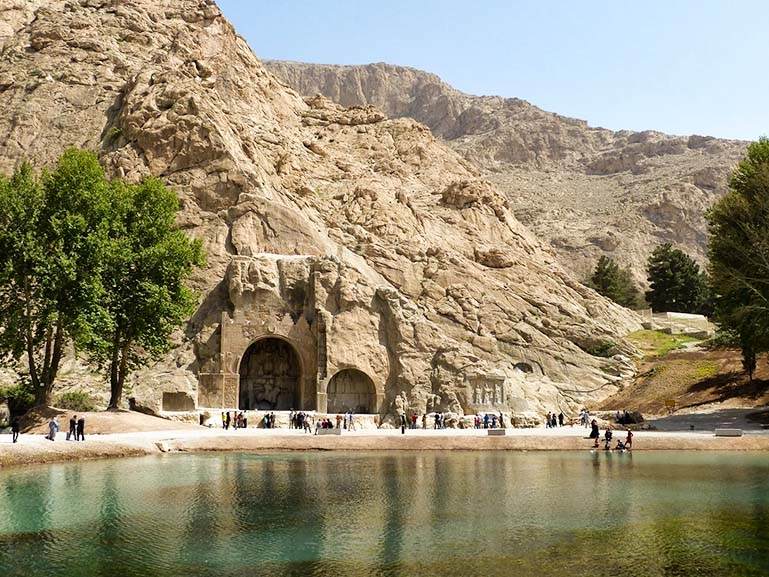
Persian Literature During Sasanians
In pre-Islamic Persia, poetry did not exist in the modern sense. Chameh and chakameh or Persian poems were songs that were syllabic like European poems, and their syllables were shortened and lengthened. During the Sassanids, especially in the time of Khosrow Parviz, one of the Sassanid kings, music developed a lot and great musicians such as: Barbad, Nakisa were in this era.
Sassanid Empire Came to An End by Arab Invasion
In 14 AH, equal to 636 AD, in the battle of Qadisiyah, the Arab armies defeated the Persian army under the command of Rostam Farrokhzad. Following this defeat, the city of Madain, the capital of the Sassanids, fell. Yazdegerd III, the last Sassanid king, retreated to central Persia. In the year 21 AH, near Nahavand, the Sassanid armies lined up against the Arabs. In this war, the Sassanid army was defeated, and Yazgard III fled to the north of Khorasan. As a result, the Arabs entered Persia. One after another, the cities and settlements were destroyed and fell by them. In the year 31 AH, Yazgard III was killed in the north of Khorasan by a poor miller. Thus, in the year 31 AH, equal to 652 AD, the glorious reign of the Sassanid dynasty came to an end.

